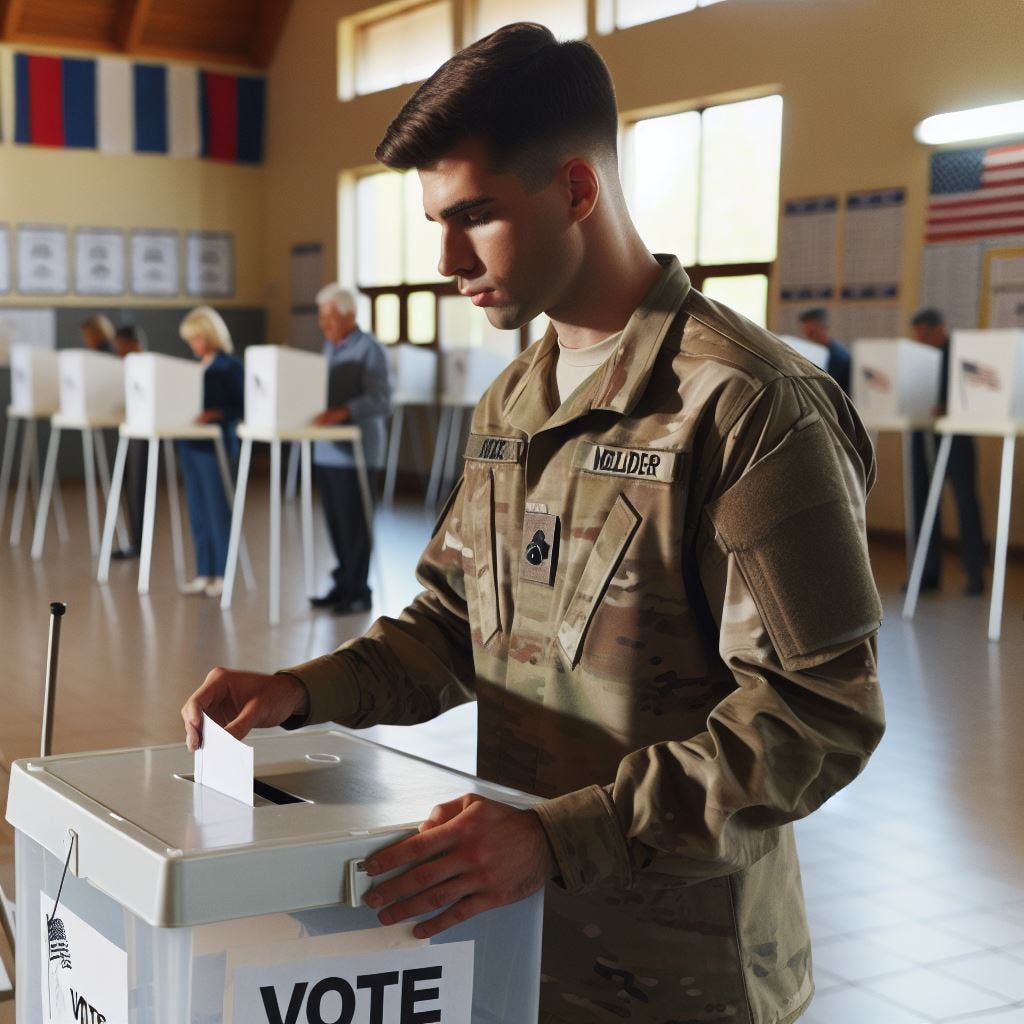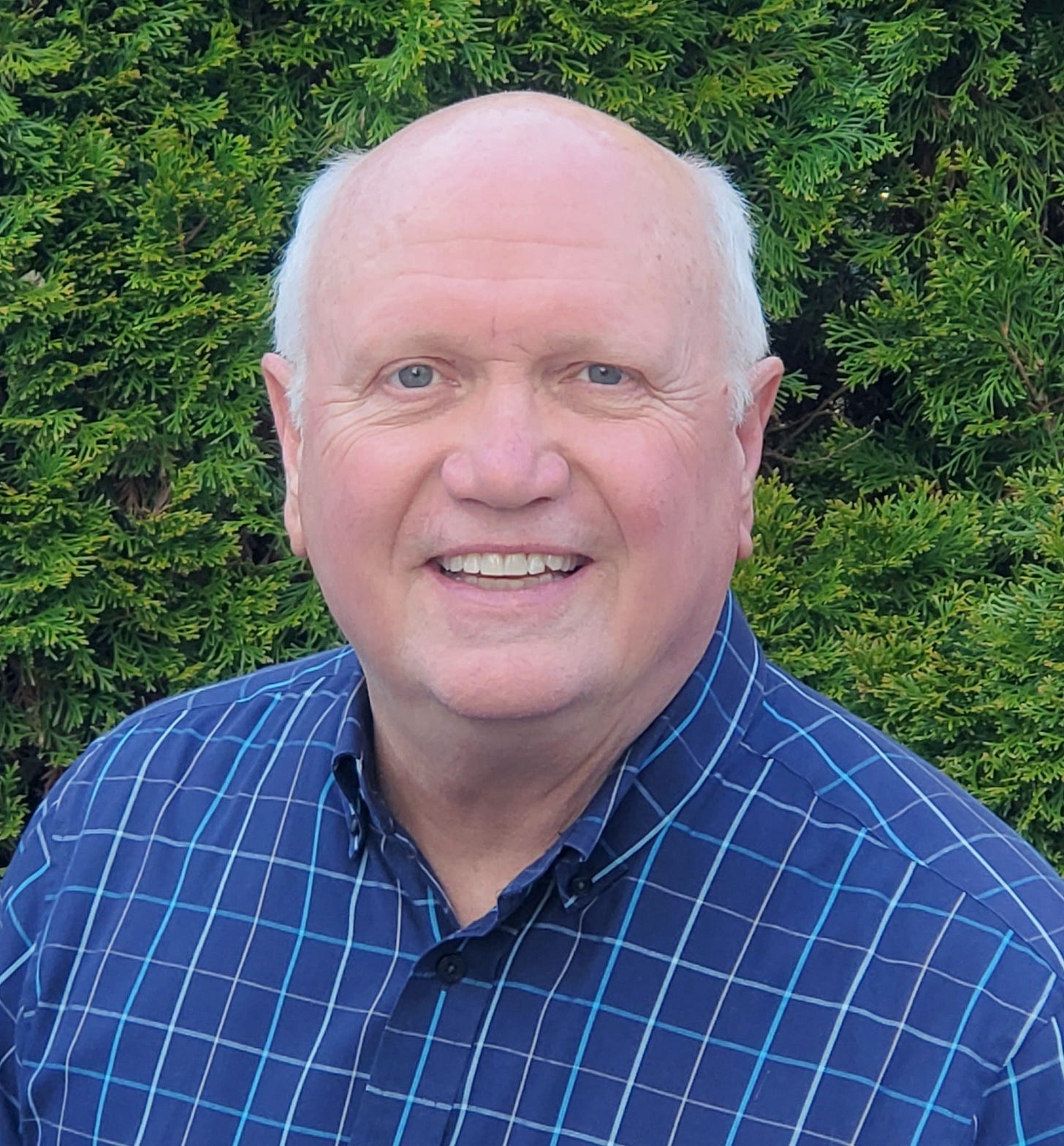We Vote for a Better Future by Processing Publicly Available Information Today
Flawed information jeopardizes voting integrity and our future
Welcome to the Gazebo! Grab a cup and join me for some tips to help you succeed at the intersection of management, communication, and technology.
This Week’s Summary:
1960’s tension was in part based on unfairness in draft and voting ages
The right to vote is both a privilege and a responsibility
Voting is a multi-layered decision-making process
We all vote in the hopes of having a better future
Accurate information is at the heart of our decision making
Always determine the source of your information before believing it
When you think about “The Sixties” what comes to mind? Jimi Hendrix? Drugs? Civil rights? Free love? Burning bras? The Vietnam War? Your answer likely depends on your age and where in the world you were at the time, if you were at all! 😊
I was in high school between 1966 and 1970 and can arguably say that I “came of age” smack dab in the middle of it all and have the tear gas, mob riots, peace marches, and pending draft memories to remind me.
One thing that folks rarely talk about is the right to vote. You may not know this, but prior to the passing of the Twenty Sixth Amendment in 1971, the voting age was 21 years old. If you say, “So what?” ponder this.
The age at which a young man could be drafted and sent off to fight in Vietnam was 18. It may seem like only 3 years, but this is one of the major disparities that fueled a lot of the tension and anger during the late 1960’s. Why was it that I could be drafted at age 18 but could not vote for the person who would determine whether I may potentially die or have to kill another human being? To me this was definitely “taxation without representation” in the most personal way. The Reagan Library does a nice job of explaining all of this.1
Do you know anyone who was affected by these flawed voting laws and benefitted from the 26th Amendment? Let us know.
Over the years I have always had excitement when watching folks vote for the first time and remember my first Presidential vote. Sadly, my first vote was for Nixon, which will probably be a topic for another post. I can definitely say I would not have voted for him had I known then what we later found out during Watergate.
That said, it always has always saddened me to read about the low turnout we get for the Presidential elections every four years, with an even lower turnout for the mid-term elections. In case you don’t believe me, check out these facts. Yes, there are still facts in the world.
According to Statista.com, since the late 1960s Presidential turnout has been around 50-60% (only 5 out of 10 eligible voters) and the midterms has been in the 35 -45% range (only 4 out of 10 eligible voters). Interestingly, in the 1800s Presidential turnout was in the 70-80% (7 to 8 out of 10) range and the midterms were in the 55-70% (5 to 7 out of 10) range. MUCH higher.2
Perhaps it is the lack of trust in the publicly available information that frustrates people to the point that the don’t know what or who to believe, and as a result, they shut down, choosing to believe nothing at all, and not vote. Those offering the misinformation win when this happens!
Which brings me to the main point of this article: Accurate information offered in a digestible way that the general public can understand, and process is critical to the successful operation of a democracy.
The free press is often referred to as the “Fourth Estate” or “Fourth Branch of Government” for just this reason, and the Founding Fathers knew it. This is evident by their making freedom of the press a constitutional law protected in the First Amendment of the Bill of Rights.3
John Adams is supposed to have written, in 1765 - even before the Declaration of Independence was signed - that “None of the means of information are more sacred, or have been more cherished with more tenderness by the settlers of American than the press.”4
James Madison, a key figure in creating the Constitution and the Bill of Rights, is said to have written, “A popular Government, without popular information, or the means of acquiring it is, but a Prologue to a Farce or a Tragedy; or perhaps both. Knowledge will forever govern ignorance: And a people who mean to be their own Governors must arm themselves with the power which knowledge gives them.” Well said, and from men who helped create the very framework upon which all of our American lives are built.5
To me, voting is not a convenience - it is an obligation we have to those who went before us and to all those around the world who aspire to have the freedom to govern themselves and not be governed by the person with the most guns.
When we go to the polling booth and cast our vote, we are making a decision. I would argue that deciding who or what to vote for is a combination of a non-routine and an ambiguous decision. Let me explain.
First, a brief recap of the two decision types. A non-routine decision is one where additional information will help reduce uncertainty to the point that the person making the decision feels comfortable making a choice. Should the uncertainty remain too high, a person may not choose (response uncertainty). Ambiguous decisions are those that have no clear “right” answers after all available information is considered, and we choose based on our education, experience, and personality traits.
When voting, we use available information to inform us on the potential reality of the future pros and cons related to the choice facing us. This is where the media plays such an important role. Considering information from various media sources helps to reduce the uncertainty surrounding our decisions and helps us get a better idea of what the future will look like given our possible choice options. After we have considered the information and a made a solid guess about future possibilities, we then process it all through our education, experience and personality traits to help us decide the “right” decision for us.
This is the potentially ambiguous part because each person may interpret the facts in a different way based on their specific circumstances. For example, a conservative might interpret the facts in one way and a liberal another. Or a woman might interpret the facts differently from a man. Or a business leader might interpret the facts differently from a union pipefitter. Each of us is different, with our own unique experiences, that inform us when making ambiguous choices.
Notice how all of this decision making is predicated on the premise that those making the decisions have the most accurate information possible when performing their pre-voting analysis.
If the information is inaccurate, they can make what they believed was the right decision not knowing it was based on flawed information, only to find out later that they would have made a different choice if they’d had the accurate information. Sort of like my Nixon decision and the later Watergate scandals.
Again, this is where the media plays a huge role because the media is the information conduit to the general public. The founders knew this and intended to keep the media independent of government which would enable the media to act as a check on government’s activities.
There is no way that the Founding Fathers could have anticipated today’s social media environment and the immense communication power that now resides in the hands of a few people such as Zuckerberg (Facebook) and Musk (Twitter/X) which means that an updated framework for preserving the accuracy of the critical information that the public consumes is desperately needed. It truly is a national security issue.
Voters can only confidently cast their votes when they are working with the accurate information that they need to determine how their voting options will affect their futures. Persuasion and presenting a point of view related to the facts is one thing. Outright lying and misrepresentation is something else. The simple word for it is “Dishonesty” which is self-serving, not public serving.
As we wind down this election season, I cannot too strongly encourage you to verify the accuracy of the information you are using to decide how to cast your vote. This means not just accepting what you hear because you agree with it, but also verifying it through other sources that may even have a different point of view. Others may interpret the facts in their own way, but the facts remain facts, and you are also able to interpret them in your own way as well.
But if you don’t have accurate facts, then you are casting your incredibly precious vote based on fiction and fantasy, not facts, which means the possible future you envision from your vote is much less likely to become your reality. Please question the accuracy of what you read and hear, then make the voting decision you feel will best get you the future you desire, and then encourage everyone you know to vote.
Have a great week and thanks for deciding to stop by! ☮
If you liked what you read, then click the Subscribe Now button to automatically receive the next edition. I’d love for you to join us! It’s free, by the way.
Don’t miss out on something helpful and/or thought provoking simply because you forgot to visit my site. Automatically receive my management communication success newsletter every Monday to start your week off on a solid note! Your information will never be shared and it will only be used for us to communicate with each other.
BECOME MORE SUCCESSFUL THROUGH BETTER COMMUNICATION
LEARN A LIFETIME OF COMMUNICATION SECRETS BY READING ED’S “GETTING THROUGH” BOOK
Listen to Ed Paulson explain his latest book “Getting Through.”
(Short 3 minute video)
“Getting Through: A Systematic Approach To Being Understood” (ISBN: 9798987950807) is available from Amazon, Barnes and Noble, and other retailers. It is only 130 pages long and can be read in just a few hours. Those few hours will change the way you communicate forever!
Getting Through: A Systematic Approach To Being Understood (ISBN: 9798987950807)
Copyright © 2024 by Ed Paulson. All Rights Reserved.
https://www.statista.com/statistics/1139251/voter-turnout-in-us-presidential-and-midterm-elections/
terrirory-mag.com/the Fourth Estate September 25, 2018 and https://www.loc.gov/resource/mjm.20_0155_0159/?sp=1&st=text.







